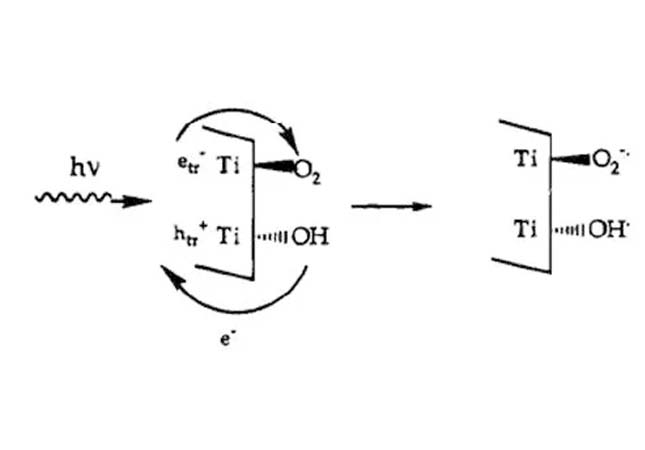With the serious environmental pollution problem increases, the polluted gases in the atmosphere have seriously endangered people's health, especially the CONVID-19 epidemic has severely stimulated our awareness of hygiene and environmental protection, which is reflected in the textile industry by the increasing demand for comfortable and healthy functional textiles, and the more strict requirement of eco-friendly textile machines such as textile cutting machine. Among them, the children clothing industry’s demand for healthy functional textiles is the most prominent.
Currently, photocatalyst is the most internationally recognized ideal material for controlling air pollution. It is a general term for photo-semiconductor materials with photocatalytic function represented by nano-scale titanium dioxide. It has the function of producing strong catalytic degradation, that is, can effectively degrade toxic and harmful gases in the air and effectively kill a variety of bacteria with decomposing and doing harmless treatment of toxins released by bacteria or fungi, the antibacterial rate is of 99.99%. Additionally, it also has the functions of removing formaldehyde, deodorizing, anti-fouling, and purifying the air. To combine the advanced photocatalyst technology with modern textile technology by using the ultraviolet absorption and photocatalytic oxidation functions of photocatalyst materials, improving the function and characteristics of textiles, providing us with a living and working environment that is more enjoyable. If the children clothing industry applies photocatalyst textiles, in its newly materials and products developing research and even expanding its application in various industries, it will gain strong market competitiveness and subvert the future of the children clothing industry.

Advantages of Photocatalyst Material
1. Antibacterial & Antifungal
Nearly all diseases come from bacterial infections, and the textiles treated with photocatalyst can kill bacteria and fungi such as Escherichia coli, Klebsiella pneumoniae, Staphylococcus aureus, Pseudomonas aeruginosa, ringworm, etc, can prevent the spread of infectious diseases and the reproduction of athlete's foot on socks can also improve the immunity of the elderly and children. Children commonly have low immunity, so they are easily infected with bacteria and sick. However, if they wear clothes that are made of photocatalyst textiles, the bacterial infection will be effectively reduced. Photocatalyst textiles can also effectively prevent clothes from getting moldy and reduce the growth of bacteria, which also prolongs the service life of the clothes and reduces the expenses on the clothes.
2. Anti-static, Dust-proof
Everyday when undressing and sleeping at night, a crackling sound is frequently heard in the dark, accompanied by blue light, which is static electricity. Static electricity may cause skin burning, increase the alkaline concentration of blood and even reduce calcium if it is serious, which is extremely dangerous for children who are in the growth period.
There is a large amount of dust adsorbed by static electricity containing a variety of viruses, bacteria and harmful substances, which will cause skin inflamed problems. Some kids with weak resistance may even cause bronchitis, asthma and arrhythmia. Research data has shown that the textiles treated with photocatalyst material have superior anti-static and dust-proof functions, significantly reduce the harm of static electricity to the human body, prevent the adhesion of dust and ensure children’s health, cleanliness, comfort and beauty.
With the development of biotechnology, nanotechnology and fine chemical industry, photocatalyst has been successfully developed that completely exerts the photocatalyst effect and can be firmly attached to the fiber without any damage to the fiber. Photocatalyst textiles are safe and comfortable to wear with the functions of no-fading, washing resistance, having obvious advantages compared with other textiles on the market, especially in the aspects of hygiene, environmental protection, safety and health performance are all considerably better than that of alternative textiles. It is proved that the simple and inexpensive textiles will contribute fewer and fewer to corporate profits, so that the competition will be fierce. Thus, the differentiated, high value-added functional textiles will become one of the future development directions.




